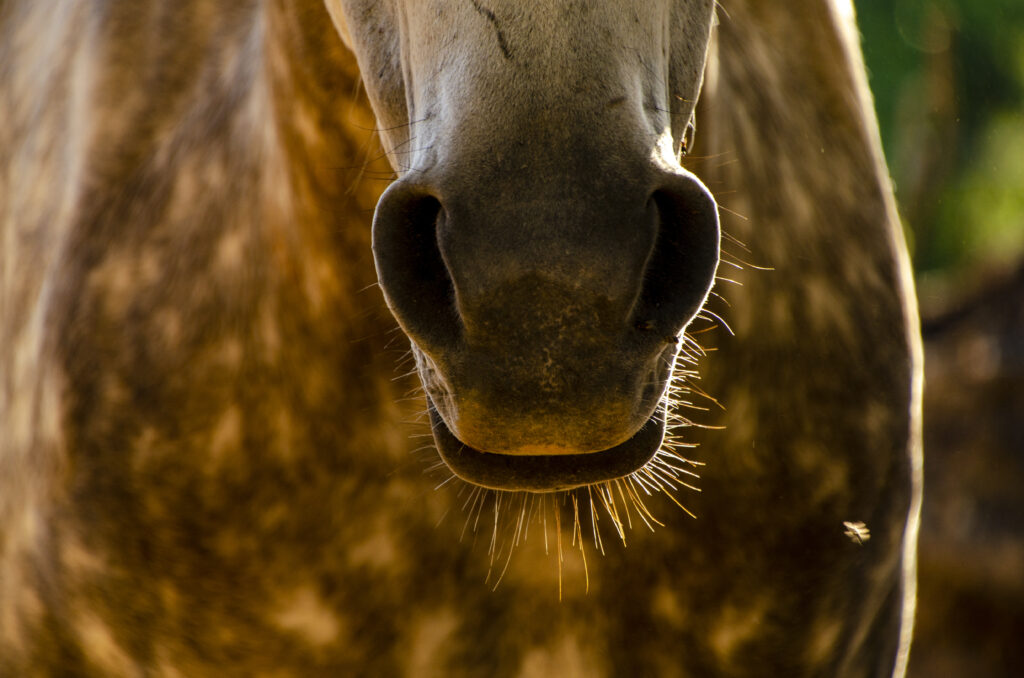Home > Horse Care > How to help a horse in respiratory distress
How to help a horse in respiratory distress
- October 19, 2022
- ⎯ Editors of EQUUS
When a horse is having difficulty breathing, get him fresh air, keep him as calm as possible and monitor his vital signs as you wait for the veterinarian.

Check his nose.
Most cases of respiratory distress in horses are due to recurrent airway obstruction (RAO, also known as heaves), but breathing can also be inhibited if an allergic reaction, insect sting or injury causes inflammation of the nostrils. If the horse’s nose appears swollen, or if he is bleeding from one or both nostrils, you’ll want to alert your veterinarian, who can prepare for a possibility other than heaves.
Keep the horse quiet and still.
Exercise or excitement will make breathing even more difficult. Allow the horse to simply stand quietly. Bring out a friendly horse to keep him company if that will help keep him calm. Do not give the horse sedatives or tranquilizers, however. These may further inhibit his respiration.
Get him some fresh air.
In most cases, a horse in respiratory distress is better off outdoors, away from all dust. Move the horse from his stall or riding ring to an open, grassy pasture area or even a dust-free parking lot. On the other hand, if the horse has pasture-induced heaves, he may do better indoors, away from grass and pollen.
Monitor his vital signs.
Watch the horse’s sides and count how many breaths he takes in one minute. The exact number isn’t important but recheck every five minutes to see if his breathing is steady. If the rate increases dramatically, he could be getting worse. Also check the color of his gums. Extremely pale or bluish mucous membranes can indicate dangerously low oxygen levels.
Look for a climate-controlled area.
Because the goal is to reduce the horse’s exposure to airborne irritants, moving him to an air-conditioned space can be a good idea. Not only is the cooler, less humid air easier to breathe, but the air-conditioning unit will filter out dust and pollen that can exacerbate the situation. Of course, most barns are not air conditioned, but a horse may benefit from being moved into a climate-controlled garage or workshop that has been cleared of hazardous objects.








